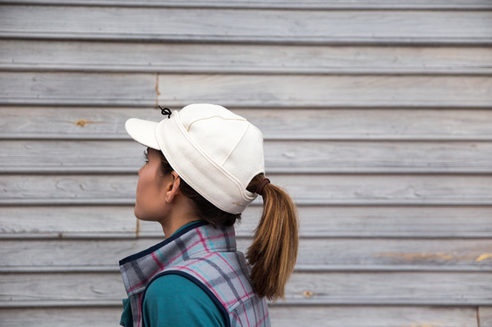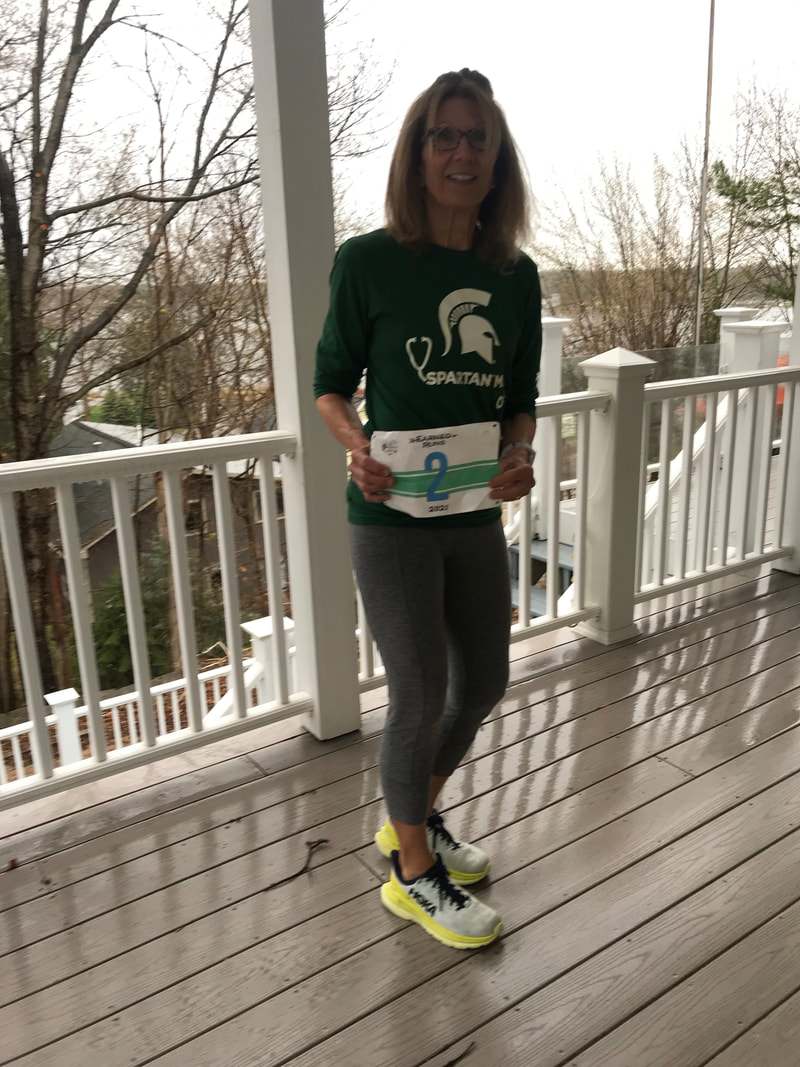BLOG
|
|
RUNNER’S WORLD EDITORS OFFER a convenient tool to guide clothing and gear selection for various weather conditions in an online article “What to Wear When You’re Running.” All that’s needed is to make selections from drop-down boxes that describe yourself and the weather: gender, temperature, conditions, wind, time of day, intensity, and feel.
The article also explains, what experienced outdoor exercisers know, that it’s best to feel uncomfortably cool when starting out to avoid feeling uncomfortably warm during the workout. I’ve heard slightly different versions, but the rule is for runners to add 15-20 degrees to the outside temp to determine what conditions will feel like once your effort intensity ramps up. The temperature increase is likely to be less for walkers, but still should be anticipated. It’s not always possible to fine tune a workout wardrobe for all types of weather. Purchasing clothing that can be “adjusted” on the go is key to making more out of less running apparel items for the upcoming cooler weather months when layering becomes necessary. Dressing appropriately for the outdoors at the start of each session, as the runnersworld.com piece does nicely (it helps you to make inter-run adjustments), is important. However, certain aspects of the weather can change over the course of a workout, making it difficult to evenly maintain comfort levels. Earned Runs offers a little more insight into clothing selection to help you make adjustments during a session (intra-run) with regard to: Wind direction: it is not likely to shift in an hour, but if your body orientation does, the wind will be hitting you at various angles over time. Facing a cold wet wind at the beginning of your run or walk means the opposite will prevail during the return leg of an out-and-back course. Old school advice is to avoid a return leg facing the wind, when fatigue may have set in. Multiple loops of a short course can also work to keep the wind direction manageable. Sun warmth: a rising or setting sun, or a sun that is intermittently obscured by clouds, buildings, or natural features may alternately warm or cool the air and you, changing conditions significantly from those at the start of a run. Precipitation: might not be an issue at the outset of a run or walk, but threatening skies can suddenly deliver moisture during a run or walk, which in cool and windy weather means there is potential for dangerous chilling to occur. Below are a few clothing tips that address intra-run environmental condition changes that may affect an extended long distance outdoor workout. Full Zip Shirts: The runnersworld.com guide says to use a jacket zipper “as a ‘thermostat”-zip up or down on the run, as needed, to stay comfortable.” I’ve found that full zip jackets work better than half or less zipper lengths at warming then cooling my torso, and then warming it up again, whether the jackets are light- or heavy-weight. If I wear 2 jackets because a thin wind and water-resistant shell is needed in addition to a warmer fabric under-jacket, having full zippers on both is most helpful, especially when running course reverses cause wind direction changes. Zippers are pulled up as I turn into a stiff breeze! Sleeveless base layer: When several tops and/or jackets are layered, the armhole region can begin to feel confining and arm swings may become restricted. Starting with a technical fabric sleeveless tank as base can help avoid the pinch of too much fabric in this area as well as overheating. Choosing a tank that’s longer than the items that will be layered over it keeps it from riding up in the back, creating a gap that lets cool air enter. Mittens: Not only do running mittens keep hands warmer in cold, wet, and windy conditions, they generally are less bulky than gloves. I find that thin wind-resistant mittens are more effective than thicker gloves at keeping hands comfortable, neither too cold or too hot, as running conditions change and more or less protection is needed. Hot hands sweat; sweat cools when gloves come off, and hands are once again cold. In my experience, wearing hand covering continuously tends to be more comfortable than cycling between on-and-off. I find that thin wind-resistant mittens help prevent hand sweating. Mittens can be pulled over the long sleeves of shirts/jackets that are designed with thumb holes. If hands warm, thin mittens can be carried and easily pulled on or off intermittently. Ankle/leg warmers: cozy light-knit legwarmers worn bunched around ankles or pulled up over calves can help keep lower legs from feeling jarred and shocked by hard roads and paths on frigid, late fall or early winter mornings. Later on, once snow/rainy season has commenced, the extra light layer can prevent cold road moisture from seeping into socks and the ankle area of tights. Visor hat plus earmuffs: A baseball-style hat with a visor is great at keeping rain, snow, or sun off the face. The hat’s cap protects the top of the head and prevents warmth from escaping, mostly without causing over-warming and sweating. Like the hands, head sweating can lead to uncomfortable cooling-heating cycles. The problem with baseball-style caps is that they don’t offer any protection for ears. Pairing a baseball-style hat with earmuffs (or a head band) does this nicely. The beauty of earmuffs is that they can be adjusted to cover more or less of the ear depending on outside conditions. The biggest drawback is the dorky look this combination generates. One solution is to wear a Stormy-Kromer hat! If you haven’t explored this option and you live in colder regions, check them out. I love mine, the ivory-color one pictured in the image above, featured in a previous blog post. Earned Runs highlights some options on the GEAR LOVE page too. Enjoy the coming cooler Fall outdoor weather in comfort by preparing for intra-run or intra-walk changes with wise purchases! RUN & MOVE HAPPY! https://www.runnersworld.com/training/a20803133/what-to-wear/ https://runningmagazine.ca/sections/gear/running-item-i-cant-live-without-leg-warmers/ https://bestearmuffsforu.com/best-earmuffs-for-running/ http://www.stormykromer.com
2 Comments
Very interesting, good job and thanks for sharing such a good blog. Your article is so convincing that I never stop myself to say something about it. You’re doing a great job. Keep it up.
Reply
Earned Runs
8/10/2020 09:14:11 am
Thank you! I'm taking a break from blogging this summer to stay active and spend less time sitting and writing about running and physical fitness. But already getting ideas about September posts. Your words are so encouraging. Take care.
Reply
Your comment will be posted after it is approved.
Leave a Reply. |
BRIDGE TO PHYSICAL SELF
Running, walking, and fitness activities enable us to experience our physical selves in a world mostly accessed through use of fingers on a mobile device. AuthorEARNED RUNS is edited and authored by me, runner and founder. In 1978 I began participating in 10K road races before 5Ks were common. I've been a dietitian, practiced and taught clinical pathology, and been involved with research that utilized pathology. I am fascinated with understanding the origins of disease as well as health and longevity. Archives
November 2023
CategoriesNew! Search Box
Earned Runs is now searchable! Check it out...
|


 RSS Feed
RSS Feed